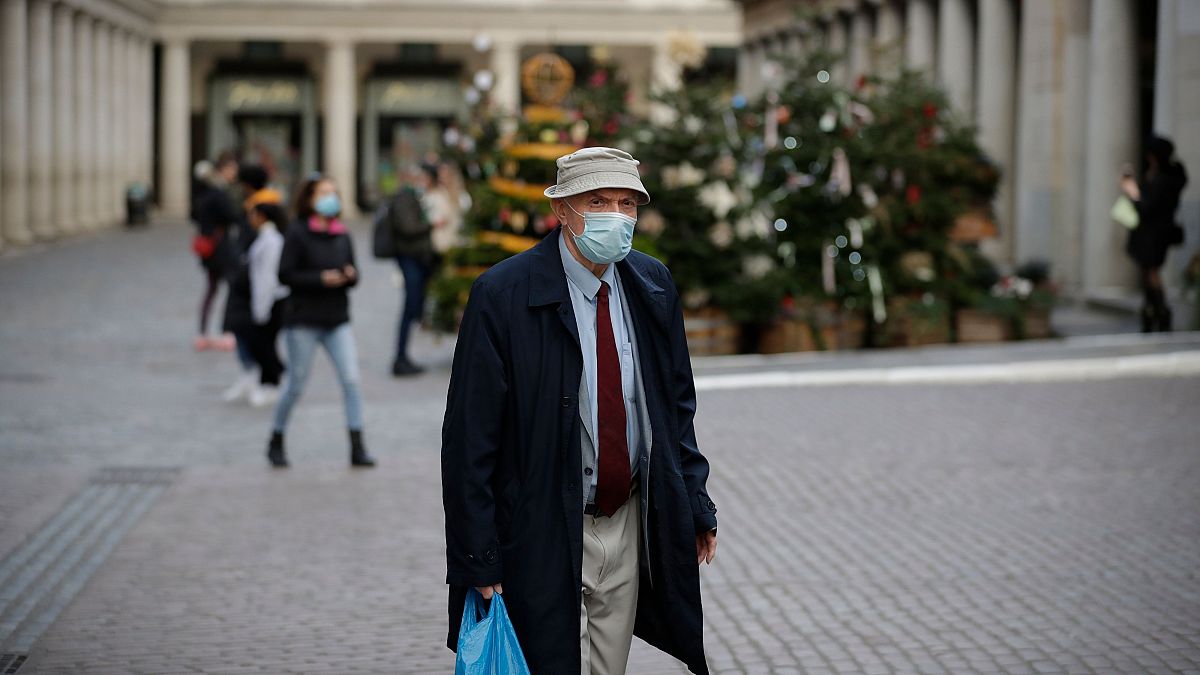The vast majority of England will continue to face severe restrictions when the country emerges from its second full coronavirus lockdown on December 2.
London has announced new tiered levels of lockdown for England.
England emerges from its second full lockdown on December 2, to a rejigged tier system, as the country continues to battle high rates of coronavirus infection.
The vast majority of the country will continue to face severe restrictions in the run-up to Christmas, with measures set to be reviewed in two weeks’ time.
Parliament must approve the measures and is due to vote next week.
Boris Johnson faces opposition from some of his own Conservative Party MPs, hostile to restrictions on personal freedoms and fearful that economic damage will outweigh public health gains.
The prime minister told a news conference that the measures would be less intrusive than the lockdown, with people no longer told to stay at home.
He stressed that in all tiers shops, leisure, hairdressers and places of worship would reopen.
Johnson added that he wanted more mass testing for coronavirus, which could enable people to be freed from some restrictions even in the strictest areas.
Vast majority in stricter measures
The only areas listed as Tier 1, medium alert, are the Isle of Wight, Cornwall and the Isles of Scilly.
The rest of the country is fairly evenly split between Tier 2, high alert, and Tier 3, very high alert.
In tier 2 are the capital London and Liverpool, while tier 3 contains major cities such as Birmingham and Manchester.
Here’s the full list of which tier each area is in, and what restrictions are in place.
Tier 1: Medium alert
Tier 1 allows for groups of up to six people to socialise indoors or out, with shops, restaurants, pubs allowed to operate table service. They must close at 11 pm.
Cinemas, casinos, theatres and other cultural establishments can open, and events are allowed to go ahead at 50% capacity, with a maximum of 4,000 allowed outdoors and 1,000 allowed indoors.
Places of worship can open, with the rule of six applying, and up to 15 people can attend weddings and 30 can attend funerals.
However, these lower levels of restrictions will apply to only a tiny minority of the country from December 2, with the vast majority facing much stricter measures in Tier 2 and 3.
South East: Isle of Wight
South West: Cornwall, Isles of Scilly
Tier 2: High alert
There will be no socialising indoors allowed with anyone outside of your household or support bubble, and the rule of six applies for socialising outdoors.
Pubs and bars will remain closed unless they operate as restaurants with table service, and shops can reopen if they are COVID-secure.
However, events will still be allowed to go ahead, with 50% capacity and a maximum of 2,000 people outdoors or 1,000 people indoors.
Shops and cultural spaces such as museums can reopen, and sports can resume with some restrictions.
The same rules for tier 1 regarding weddings and funerals apply here as well.
East of England: Bedfordshire and Milton Keynes, Cambridgeshire, including Peterborough, Essex, Thurrock and Southend on Sea, Hertfordshire, Norfolk, Suffolk,
East Midlands: Northamptonshire, Rutland, London
North West: Cumbria, Liverpool City Region, Warrington and Cheshire
South East: Bracknell Forest, Brighton and Hove, Buckinghamshire, East Sussex, Hampshire (except the Isle of Wight), Portsmouth and Southampton, Oxfordshire, Reading, Surrey, West Berkshire, West Sussex, Windsor and Maidenhead, Wokingham
South West: Bath and North East Somerset, Bournemouth, Christchurch and Poole, Devon, Dorset, Gloucestershire, South Somerset, Somerset West and Taunton, Mendip and Sedgemoor, Wiltshire and Swindon
West Midlands: Herefordshire, Shropshire and Telford & Wrekin, Worcestershire,
Yorkshire: North Yorkshire, York
Tier 3: Very High alert
Tier 3 is for areas with rapidly rising rates of infection and will carry the most severe restrictions.
No socialising indoors or almost all places outdoors is allowed, outside of households and support bubbles.
In public places such as parks and beaches, the rule of six applies.
Bars, restaurants and pubs will stay closed, but takeaway and delivery services are allowed.
Hotels and other rented accommodations will close, and indoors entertainment venues will be shut too.
Leisure and sports facilities can stay open, but group exercise classes aren’t allowed, and there is no public attendance at sports.
Some organised outdoor sport, and physical activity and exercise classes can continue.
East Midlands: Derby and Derbyshire, Leicester and Leicestershire, Lincolnshire, Nottingham and Nottinghamshire
North East: County Durham, Gateshead, Newcastle upon Tyne, North Tyneside, Northumberland, South Tyneside, Sunderland, Darlington, Hartlepool, Middlesbrough, Redcar and Cleveland, Stockton-on-Tees
North West: Blackburn with Darwen, Blackpool, Greater Manchester, Lancashire
South East: Kent and Medway, Slough (remainder of Berkshire is tier 2: High alert)
South West: Bristol, North Somerset, South Gloucestershire
West Midlands: Birmingham and Black Country, Staffordshire and Stoke-on-Trent, Warwickshire, Coventry and Solihull
Yorkshire and The Humber: The Humber, South Yorkshire, West Yorkshire
